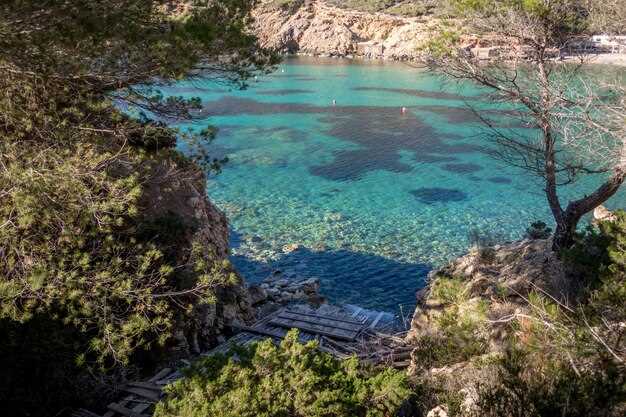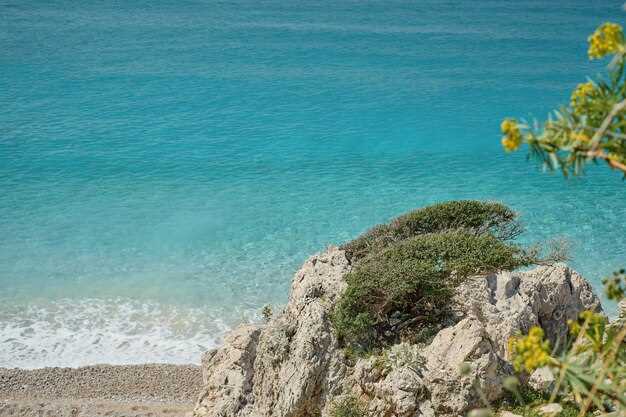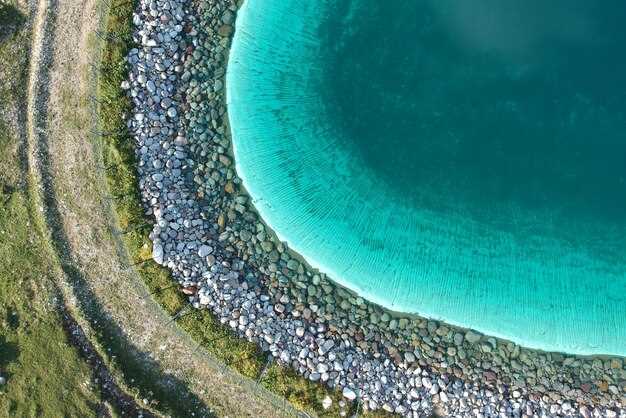
Start with San Vito lo Capo for a golden, iconic Sicilian beach experience. Arrive before 9 a.m. to catch calm turquoise water and soft sand along the coastal curve. While you plan your route, the city’s history adds depth to your sun-and-sea day, and you can join a morning boat trip to nearby coves before the crowds arrive. If you want a view, climb them cliffs for a panoramic shot.
From famous Cefalù on the northern coast to tiny coves along Vendicari, Sicily offers coastal moods that fit every plan. If you want a swim with marine life, Isola Bella near Taormina and Calamosche in Vendicari Reserve should be on your list. Mondello Beach near Palermo gives a quick city-break vibe with easy access and cheerful beach bars, while Scala dei Turchi offers a dramatic backdrop with golden cliffs meeting blue water. google reviews often highlight safety, clean water, and friendly staff at these spots, helping you tailor a route that suits your pace.
Plan the route to arrive by mid-morning and map a loop to cover at least three beaches in one day. Use google maps to check current conditions, parking, and tides. For families with kids, choose beaches with calm water and shaded spots; bring an umbrella, water, and snacks. The coastal variety means some beaches are sandy and wide, others are rocky but offer stunning viewpoints as afternoon approaches. A flexible loop always fits a relaxed day.
Each spot on this list of 12 beaches in Sicily blends beauty with a sense of place and a simple, relaxed pace for your travel days. For travelers who want to combine sun with culture, this coast rewards time spent strolling promenades, tasting street food, and learning a bit about local history. The sicilys coast invites you to explore more than one bay during a single vacation.
Practical Access, Tips, and Quick Gear for Your Sicilian Beach Plan
Take the car-free route along the northeast coast: ride the fast trains to Catania or Messina, then use local buses or ferries to hop between towns and reach bluish water beaches without long roads. The result is efficient days with minimal parking hassles and more time in the sun.
Create a tight itinerary that groups entrances and parking options by day. Start from city hubs with wide access, such as Catania, Taormina, and Messina, then drift toward the largest sandy stretches and the Aeolian-side coves. Before you go, read a post to map a practical order, and use maps created by locals to mark each stop ahead of time.
When you move, note entrances to beaches; most beaches have one entrance and a short path to the sand. Some lots stop; others require a short climb to the shore. Plan quick stop options at town centers to grab snacks and drinks, just to keep energy up here.
Gear and packing should stay simple. Bring light layers, a compact towel, sunscreen, a hat, a refillable bottle, and a small first-aid kit. Keep a phone charger and a waterproof pouch for valuables. If you intend to visit the Aeolian islands, check the schedule from Milazzo or Messina; high-speed ferries cut travel time, while slower ferries stay closer to the coast. Pack something light and flexible for weather shifts, and here you have the option to adjust plans as needed.
Safety and comfort tips: check tides and the height of dunes or steps before you climb any bluff; wear sturdy sandals for rocky shoreline; stay hydrated with drinks, and carry a small snack. Taste local bites, and let the tongue enjoy Sicily’s flavors without overdoing it. For a broader view, keep ahead of weather and crowds by glancing at maps before you leave town.
For quick reference, keep these practical notes handy: start from the city center, keep the most direct lines in mind, and use a single app to track entrances, stops, and ferries. Here is a concise gear and readiness overview to support your plan.
| Item | Why you need it | Notes |
|---|---|---|
| Water bottle | Hydration during sun exposure | Refill at town centers; carry light |
| Sunscreen SPF 30–50 | Protect skin during long beach stretches | Reapply every 2 hours or after swimming |
| Light towel or quick-dry sarong | Drying off and shade pauses | Sand-friendly fabric |
| Hat and sunglasses | Shade and glare reduction | Foldable hat travels well |
| Waterproof pouch | Keep phone and cards safe near water | Seal securely |
| Compact first-aid kit | Minor cuts or scrapes on rocky paths | Include blister patches |
| Maps app with offline caches | Navigate entrances and routes without signal | Download ahead of time |
Cala Azzurra: access, best time to visit, and parking tips
Arrive before 8:30 am to enjoy calmer water, a quieter backdrop, and the chance to snap blue-hued photos with little disturbance. The beach itself lies along Sicily’s northern coast and is reached by a short coastal path from a small parking area, which keeps the whole experience manageable for a quick day trip.
-
Access: The cove is located along a rocky stretch near cefalu, with the path starting from a tiny pull-off on the coast road. Park in the nearby lot or on the shoulder if the lot is full, then follow the step-down trail for about 5–10 minutes. The route is straightforward but uneven in places, so wear sturdy shoes.
-
How to reach it: Use google Maps to locate the pull-off, then walk the little trail to the sand and water. The approach is well signposted, and the beach itself sits as a calm blue enclave with a natural land backdrop and a few low cliffs.
-
Nearby features: Look for a small watchtower ruins site nearby, which adds a touch of history to the passable land around the cove. The scenery works as a nice contrast to the turquoise water, making this destination popular with travelers who love a little exploration before dipping in.
Best time to visit: Choose the shoulder months of May, June, or September for the quietest atmosphere and a comfortable water temperature. These periods usually offer calmer winds and fewer crowds than peak July–August. If you want the whole day to yourself, plan a visit on weekdays and aim for overcast mornings that clear by mid‑afternoon, when the light is ideal for photos against the blue water and a soft sky backdrop.
- Weekday mornings are typically quieter, ideal for families with kids or travelers seeking calm water.
- Sea temperature is friendlier from late spring through early autumn, with the warmest days usually in July and August.
- For a longer stay, pair this beach with Cefalu’s town sights or the Egadi islands on a broader Sicily itinerary.
Parking tips: Parking is limited, especially in July and August. Arrive early to secure a spot, or consider arriving after lunch when some visitors depart. Look for the official pull‑off signs and avoid blocking access to the road. If you bought a map or rented a car, you can save time by heading to the nearby lot rather than circling for a street spot. Typical price ranges fluctuate during peak season, so budget a little extra for the day. If you need fresh details, you can email the local office or your Cefalu contact for updates before you head out.
Accessibility notes: The path is accessible to most walkers, but it isn’t fully wheelchair-friendly due to the uneven surface. Bring water, a hat, and sunscreen to stay comfortable as you explore the rocky land and enjoy the view that few other beaches can claim.
Past visitors often say Cala Azzurra is among the most picturesque beaches in Sicily, a destination where the whole family can relax and everyone can find a little space. Remember, the rise in popularity means early planning helps you reach the beach with less hassle–and you’ll leave with a very distinct memory of this little sailors’ gem on the Sicilian coast.
Mondello Beach: parking, facilities, lifeguards, and shade options

Best tip: park in the public lot along Viale Regina Elena for quick sand access and predictable rates. From there, head along the promenade to the left rocks or the sandy stretch in minutes.
Parking options include street meters and nearby public lots. Machines accept cash and cards, and all-day passes appear during the peak months. Typical rates run from 1 to 3 euros per hour, with a daily max around 20–25 euros when the beach is busy. If you travel with a suitcase, this setup makes it easy to reach the water without backtracking.
Mondello sits about 12 kilometers from Palermo’s city center, a straightforward ride by bus or taxi. If you’re combining a Sicily route with trapani or lipari, Mondello can be a tiny but bright stop that fits between ferries and city strolls–kalè moments, gelato, and blue water.
Facilities cover clean toilets, outdoor showers, changing booths, and accessible paths near the main entrance. Beach clubs offer extras like lockers and restrooms; you can rent a parasol and two chairs, or bring your own gear and use the public taps.
Lifeguards patrol the main stretch during the peak season, typically June through August, with flags marking safe zones. They tend to operate from around 10:00 to 18:00; always check posted hours at the entry kiosk.
Shade options include rentable parasols and a pine grove behind the dunes near fontane. For a retro look, choose a sunbed near the peninsula edge, where calm water and gentle waves invite easy swimming. A tiny corner near the rocks also offers shade for a quick rest.
Practical tips: locals know the best spots by word of mouth; bring a small book and jot notes for your travel page. I wrote this guide with you in mind. Arrive early in the busy months to secure shade and a good place; the head of the beach may get crowded, but a short walk reaches quieter spots, and thats Sicily in a day.
Isola Bella and Taormina Coast: snorkeling access, tides, and crowd tips

Arrive by 8:30 AM to Isola Bella’s snorkeling patch along the north-east Taormina coast; you’ll enjoy azzura water, clear visibility, and a calm start before the boats fill the inlet. Bring sunscreen and a light towel; renting gear from Taormina waterfront stalls speeds setup, so you can start swimming within minutes.
Snorkeling access: From the Mazzarò area you can reach sheltered coves around Isola Bella by a short swim or by boat tours that drop you near the eastern reef. Isola Bella’s rocky shoreline offers mixed-depth zones, ideal for both beginners and more confident swimmers, with shallow pockets close to shore and deeper runs a bit farther out. The best spots stay close to the shore, and family-friendly patches are clearly marked by local lifeguards during the peak season.
Tides and water conditions: The north-east coast shows mild tidal variation; mornings are calmer as the sirocco is usually lighter. If a north wind picks up, water can become choppier by late morning, so plan the second swim for late morning or late afternoon. For the clearest azzura, snorkel after a light breeze has refreshed the surface.
Crowd tips: July and August draw the most visitors; spring and autumn shoulder months are quieter. Weekdays stay best; start early and stay a short distance from Isola Bella’s main inlet to find calmer patches along the southern coast as well. If you see long queues for boat rides, consider a quick trek toward Capo coastal coves for extra space and a different vibe.
Practical packing and safety: sunscreen, water, and a compact mask and snorkel are smart for renting only if you want to test equipment; bring your own for comfort. A small bag keeps essentials dry; rent gear from authorized stalls to avoid low-quality gear. The retro vibe and white rocky edges set a distinctive mood on the Sicily coast; a local guide would help you pick best pockets and keep a family-friendly pace. If you would like a quick local guide, call a vendor the day before; they can set up a snorkeling session that fits your group.
Spiaggia dei Conigli (Rabbit Beach) and nearby coves: seasonal access, permits, and safety
Plan to visit Spiaggia dei Conigli at dawn or late afternoon to catch fabulous light and avoid crowds. The location on Italy’s southern island of Lampedusa makes it a standout, but seasonal access is real: at the height of nesting season, access can be limited to protect Caretta caretta turtles, and you should verify local rules before you go.
Permits and access: During the core nesting period, access may require a permit or a licensed guide, with limited daily slots. Check the official page or contact local authorities to confirm whether you need a permit for the day and how to obtain it. If you’re renting gear, plan to arrange it in town or before you reach the trailhead.
Safety and behavior: Stay on the marked trails and respect the dunes on the side of the coast. Tides can shift quickly, rocks are slippery, and there are no lifeguards on duty. Bring water shoes, apply sun protection, and keep a close eye on children; never disturb nests and please take away all trash. If you’re unsure, ask a local before stepping onto the sand.
Nearby coves and access: Cala Pulcino and Cala Guitgia are nearby coves with a more caribbean-like turquoise color and a bustle that draws crowds, especially in peak season. Differences between the coves include sand texture, water depth, and facilities, so plan to try a tiny cove on the side if you want a quieter pause. Direct trails connect these spots from the main path, and you can compare features before deciding where to swim closer to town. If you’re aiming for a full Italian day, map out locations where you’ll stop, and check tides and parking options in advance to avoid missing the best light.
Plan Your Sicily Beach Day: transport, costs, sun protection, and packing checklist
Take a car-free day: ride a regional train to a famous hotspot along the coast, then walk between cliffs, white sands and stony coves. Check google for schedules and read posts from fellow travelers; secret tip: arrive early to enjoy calm seas. Fact: sun intensity peaks mid-afternoon, so plan your moves accordingly. This itinerary includes a simple plan created to fit a half-day or full-day, until you decide to stay longer.
Transport and costs
- Rail and regional buses: expect day-trip fares around 4–10 EUR. car-free travel saves on parking and spending, and schedules are usually reliable–verify on google and in recent posts.
- Ferries between coastal towns or to small islands: budget roughly 6–20 EUR depending on distance and season, great for adding a secret island-feel to your day.
- Bicycle or on-foot segments: rent bikes for ~8–15 EUR per day; insanely pleasant to glide along the coast and pauses at cliff viewpoints.
- Parking and road access: if you drive, parking can run 1–3 EUR per hour in busy towns; consider a route that stays on the coast road and relies on transit between beaches.
Practical costs snapshot
- Tickets and transfers: 4–20 EUR total, depending on distance and modality.
- Food and drinks: 8–15 EUR for a light meal, plus 2–4 EUR per drinks stop along the coast.
- Sunscreen and basics: 6–12 EUR for SPF 30–50, plus small purchases like a hat or sunglasses if you forgot them.
- Extras: small shade items, towel rental, or a compact umbrella can add 3–6 EUR.
Sun protection and timing
- Arrive at sunrise or early morning to beat the crowds and still enjoy cool air; this is a great fact for planning.
- Sun protection: SPF 30–50, reapply every two hours, and after swimming. Wear a wide-brim hat and UV-protection sunglasses.
- Shade strategy: map out a few shade options–rock overhangs near the cliffs, a kiosk with an umbrella, or a portable pop-up shade for longer rests.
- Hydration: bring enough water (a minimum of 1.5–2 liters per person for hot days) and a few drinks breaks at beach bars if you want a break from packing.
Packing checklist (a simple list I created for quick reference)
- Swimsuit and quick-dry towel
- Sunscreen SPF 30–50, extra bottle bought in advance; apply before leaving the hotel and again after lunch
- Wide-brim hat, sunglasses, light cover-up
- Water bottle (reusable), snacks, and a small cooler bag if you plan to picnic
- Phone, power bank, and a small waterproof pouch for valuables
- Light rain jacket or compact umbrella for windy coast sections
- Map or offline download of your itinerary, plus printed notes from a few posts if you prefer paper
- Trash bag for keeping the area clean; an extra bag for wet swimwear
- Beach toys or a lightweight snorkel set if you’re headed to clear waters
- Car-free backup: a lightweight backpack with a few essentials in case you switch between beaches
Itinerary tips to maximize time
- Start at a coast-facing beach with easy access to cliffs; walk along the shore to reach a few stony coves and white-sand patches.
- Plan 1–2 cooling breaks in shade; itinerary includes buffer time for spontaneous photo stops or a quick dip.
- Keep an eye on sunset times; many beaches stay open until the last light fades, and crowds thin out afterward.
Extra notes
- Countless options exist along Sicily’s coast; you can still tailor a week-long loop or a single, focused day.
- If you’re unsure, start with a road-accessible hotspot and switch to rail to return; this reduces spending and keeps options open.
- For a truly flexible plan, copy the basic route into a notes post on your phone and adjust as you go; many posts suggest alternates based on weather and crowds.
